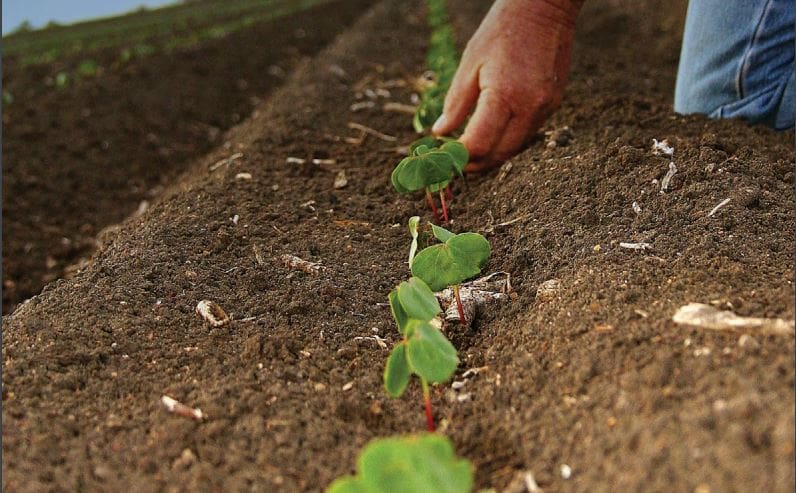THE top 20 per cent of cotton growers in 2018 grew 1.5 bales/hectare more cotton than the ‘average’ farmer, and they did it for $518/ha less.
They also achieved a higher price of $550/bale compared to the ‘average’ farmer’s $542/b.
These were among the key findings in the recently-released 2018 Australian Cotton Comparative Analysis which benchmarked the performance of a cross-section of cotton growers representing 15 per cent of Australia’s total cotton production.
Conducted as a joint initiative between the Cotton Research and Development Corporation (CRDC) and Boyce Chartered Accountants, the annual assessment of the cotton industry’s performance has been running for more than 30 years.
Boyce Chartered Accountants director, Hamish Cullenward, said the latest results showed the 2018 season was the most profitable for growers since the analysis began.
He said many producers had been able to lock in high prices and capitalise on the high yields they achieved.
“The average price was up on previous years, but there were also people participating in the $550/bale plus range. So, with the additional yields and continuing to manage costs, it was the highest the top 20 per cent have ever been,” he said.
The 2018 season was an unprecedented result for the top 20pc of farmers, with a profit of $3821/ha, well above the 2017 profit of $2592/ha and the five-year average of $2901/ha.
The fact that, in 2018, the top 20pc of farmers grew more cotton per hectare at a lower cost per hectare highlights the opportunity for many other growers in the industry.
Five-year average
Looking at the wider, five-year averages, Mr Cullenward said there was a stark difference between the top 20pc of growers and the ‘average’.
“In the five selected years the top 20pc of farmers made 79pc more profit after interest than the average farmer – $2900/ha compared to $1600/ha,” he said.
“That difference is attributed to land productivity: 48pc of that difference was attributed to yield; 14pc to price and better marketing; 28pc to direct cost savings; and 10pc to interest savings.”
The report said the message from these figures was that better land productivity, measured by higher yield, was overwhelmingly the major feature of the top performers.
“Farmers should concentrate on growing higher yield within a realistic cost framework rather than searching for dramatic cost cutting measures if they wish to improve their performance significantly.”
Valley comparisons
Mr Cullenward said the analysis highlighted the differences between the cotton-growing valleys of Queensland and New South Wales which all had their own dynamics.
“Down south the big one is water. Water charges are well above the other valleys. You can really see the price of water and the impact that has on the analysis. You can see that the profit in that valley is lower,” he said.
“But you can also see that the interest in the southern valleys is higher which is probably reflective of people going into the newer industry down south and gearing up. The average hectares are lower than the other valleys in the north.”
Top 20pc compared to ‘average’
Top 20pc of farmers:
- Yield (13.33b/ha), was an increase of 2.98b/ha from the previous year (2017 was 11.35b/ha) and slightly above the five-year average of 12.85b/ha.
- Price was $550/b, which is $1/b up from 2017 and $22/b above the five-year average.
- Operating costs for this group fell, from 2017 to 2018, by $69/ha to $3378/ha, which is $337/ha below the five-year average. The main contributors to the 2018 result being $337/ha below the five-year average were R & M, Depreciation and Wages.
- This group grew more cotton (1.51b/ha) than the ‘average’ group and did it more cheaply (by $518/ha).
- The main contributors to the $518/ha variance (savings made by the top 20pc of farmers) in operating expenses were: repair and maintenance ($176/ha); water charges and purchases ($155/ha); wages ($131/ha); depreciation ($93/ha); and fuel and oil ($77/ha). To compensate for these savings, the top 20pc spent more than the ‘average’, on a per hectare basis, on chemicals (all), consultants, fertiliser and insurance.
Average farmers:
- Yield (11.82b/ha) increased an average of 1.23b/ha from 10.59b/ha in 2017. This is 0.18b/ha more than the five-year average of 11.64b/ha.
- Price was $542/b which is $15/b higher than last year and $29/ha above the five-year average of $513/b.
- Operating costs were higher but still below the five-year average. 2018 costs were $3896/ha compared to $3722/ha for 2017 and $4080/ha for the five-year average.
- Water, fuel, wages, fertiliser and general overheads were key cost items to increase while chemicals and application were notably down in 2018.
- Total income was $6409/ha for 2018. This was up $834/ha from 2017 and up $413/ha on the five-year average.
For the average farmers, this was the highest net profit per hectare seen in the history of the report. Similar to the prior three years, 2018 was another great season, with net profit of $2234/ha being higher than last years’ $1557/ha and higher than the five-year average of $1621/ha. Based on these figures, a yield of 7.77b/ha was required to cover total expenses, a figure which is well below the five-year average of 8.59b/ha.
…………………………………..
For the full CRDC and Boyce Chartered Accountants ‘Australian Cotton Comparative Analysis’, click here.


HAVE YOUR SAY